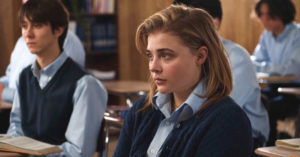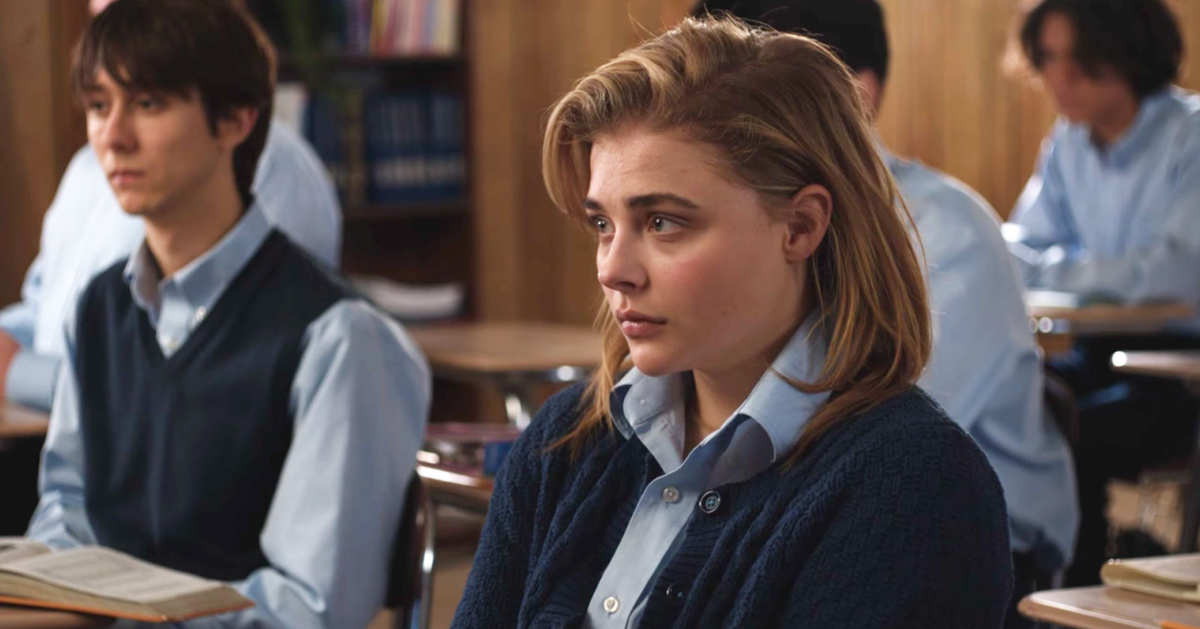The Miseducation of Cameron Post
Posted on August 2, 2018 at 5:29 pm
B +| Lowest Recommended Age: | High School |
| MPAA Rating: | Not rated |
| Profanity: | Strong language |
| Alcohol/ Drugs: | Marijuana |
| Violence/ Scariness: | Off-screen self-mutilation and attempted suicide |
| Diversity Issues: | A theme of the movie |
| Date Released to Theaters: | August 3, 2018 |
“Pray the gay away.” That is the idea behind “gay conversion” facilities, now thankfully outlawed in fourteen states as contrary to both science and human dignity. But “The Miseducation of Cameron Post,” based on the novel by Emily M. Danforth, is set in 1993. It might as well have been 1793 for the Puritanical attitude of the God’s Promise facility the title character is sent to when her date discovers her making out with a girl on prom night.

Cameron (a performance of exceptional sensitivity by Chloe Grace Moretz) is packed up immediately by her aunt and uncle (her parents are dead) to become a “Disciple” at God’s Promise, run by the guitar-strumming, upbeat Reverend Rick, played by John Gallagher, Jr., showing us flickers of anxiety as he tries to reassure the teens at the facility that if he could be “cured” of being gay, so can anyone. The resident bad cop to Reverend Rick’s relentless cheer is Dr. Lydia Marsh (Jennifer Ehle), who runs a tight ship, whether she is telling Cameron that she will not allow her to be called “Cam” (“Cameron is already a masculine name. To abbreviate it only exacerbates your gender confusion.”) or directing the “Disciples” to reveal their most private conflicts in publicly posted iceberg diagrams. What is important lies beneath the surface, and that is dangerous enough to sink the Titanic, she explains. There is a pretense of choice, as Cameron is given a contract to sign, though she is underage and has no alternative.
Marsh tells the teenagers that “There’s no such thing as homosexuality. There’s only the sin we all face.” She compares being gay to dangerous, self-destructive behavior: “Would you let drug addicts throw parades for themselves?” And she posits the cause of what they term SSA (same-sex attraction): “too much bonding with a father over sports,” for example.
A quiet tone keeps the outrageous setting from turning into parody, even when they watch the (real) Christian workout video, “Blessercize,” and the teenagers are asked leading questions like, “When did you let same sex attraction get in the way of your goals?” While a non-conversion facility might impose some restrictions on interactions between the boys and girls, there are few here. Presumably, despite professed very strict rules about sexual behavior, Marsh and Reverend Rick are hoping the opposite genders will tempt each other.
The film won the top award at Sundance, a tribute to the understated mood and to an outstanding performance from Moretz, who allows us to observe her as she observes those around her. Neither she nor we are miseducated by the end.
Parents should know that this film includes explicit sexual references and situations, homophobia, some language, and marijuana.
Family discussion: What does it mean to say, “when I am weak, I am strong?” What ideas have changed since 1993?
If you like this, try: “But I’m a Teenager” and the upcoming “Boy Erased”



